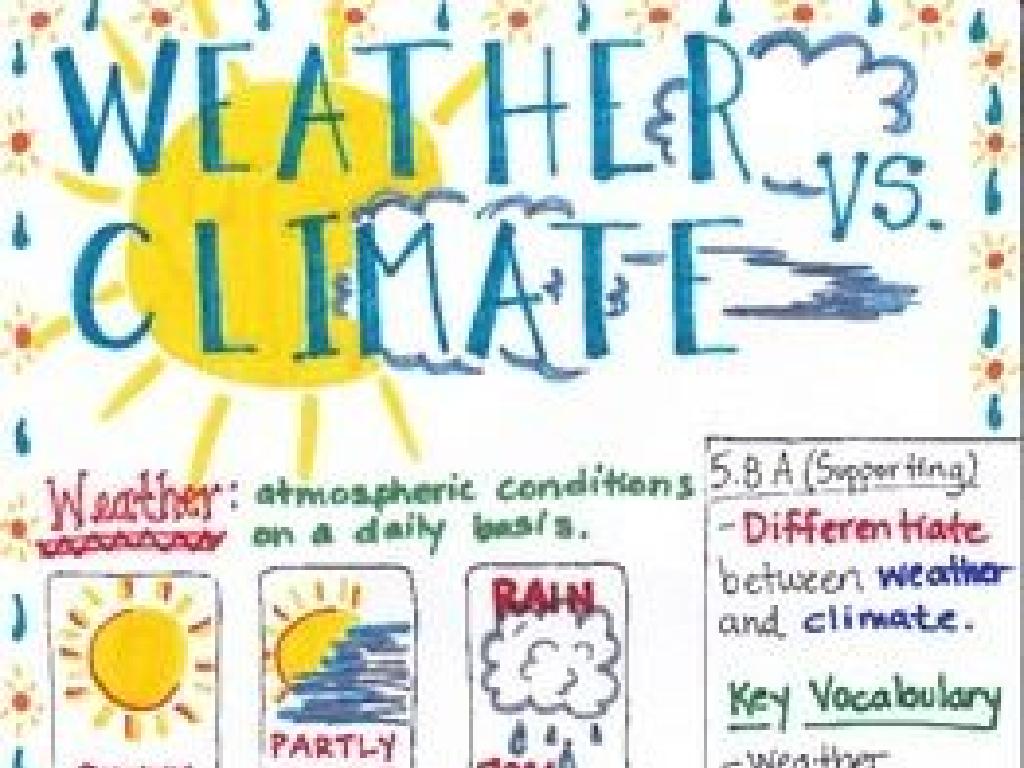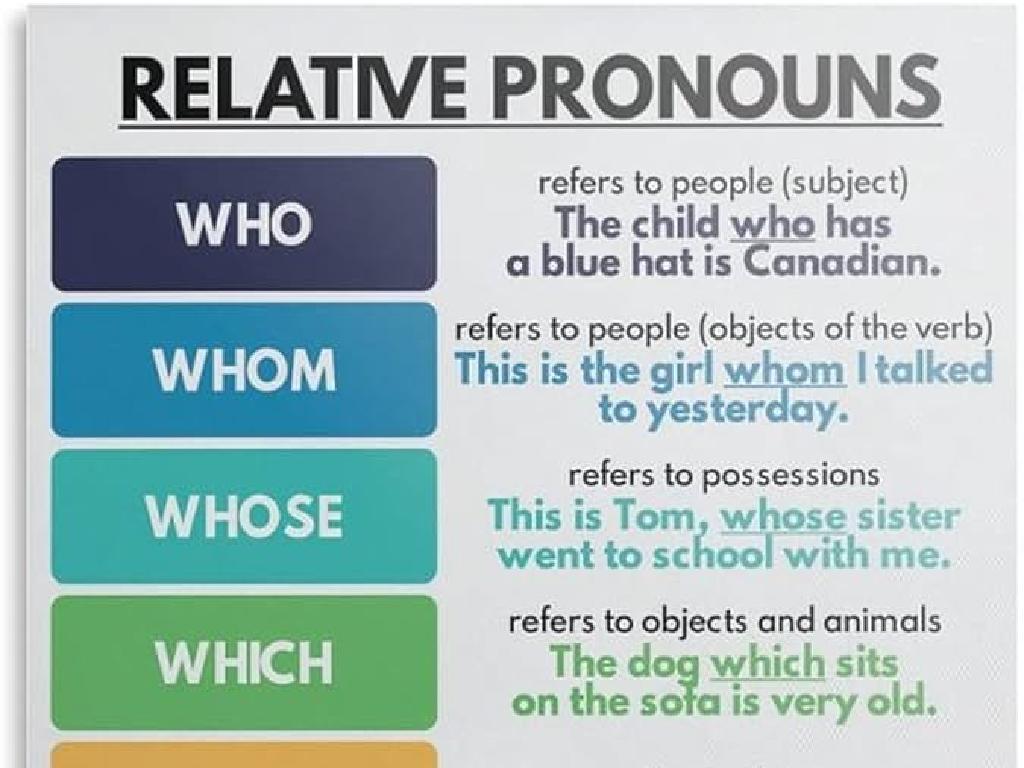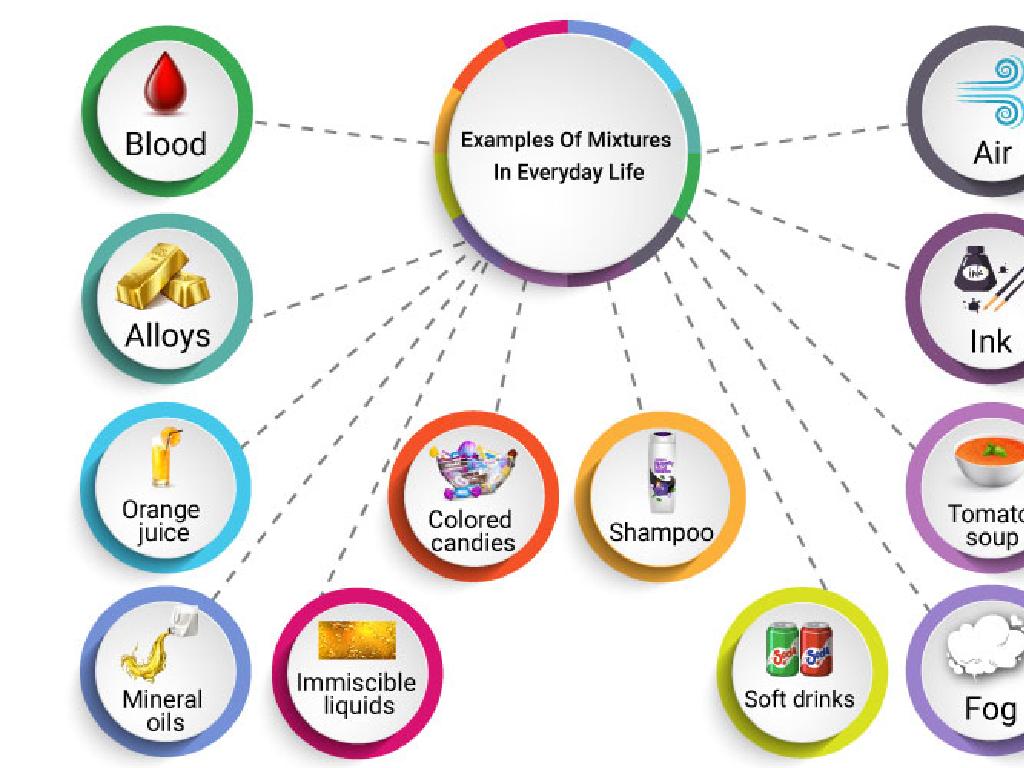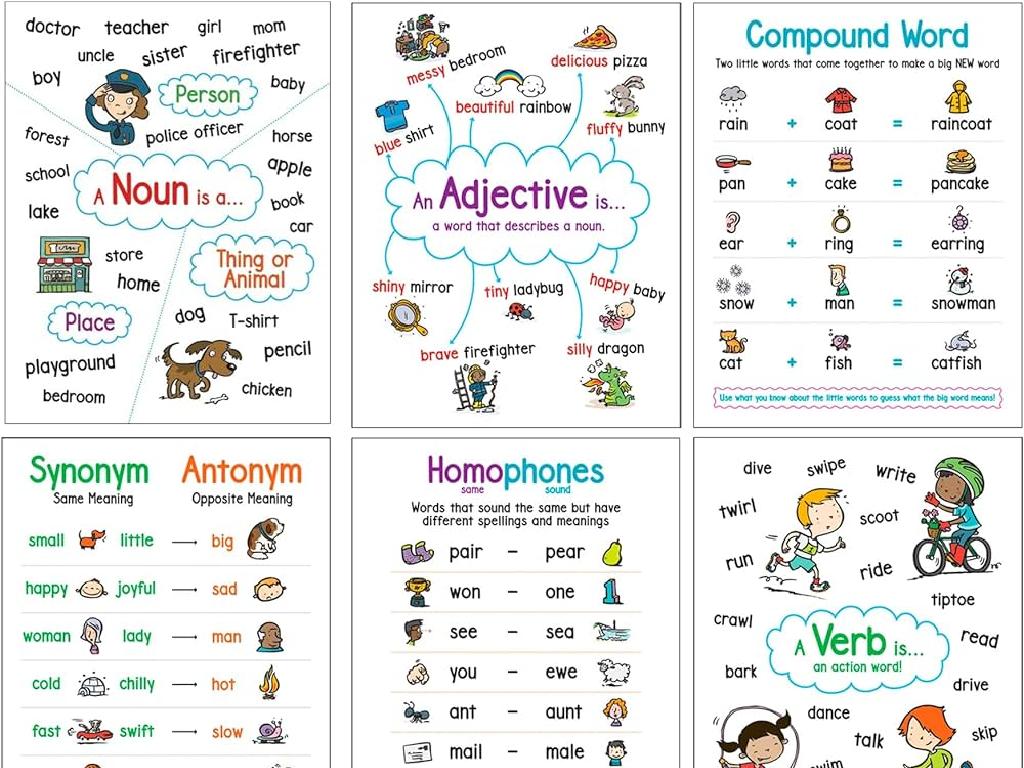Read About Animals
Subject: Language arts
Grade: First grade
Topic: Read-Alone Informational Texts
Please LOG IN to download the presentation. Access is available to registered users only.
View More Content
Welcome to the Animal Kingdom!
– Learn about animals by reading
– Explore animal types
– Examples: Mammals, Reptiles, Birds, Fish
– Discover animals’ habitats
– Where do they live? Forests, oceans, deserts
– Aim to become animal experts
|
This slide is designed to excite first graders about the diversity of the animal kingdom. Start by explaining that reading is a way to learn about different animals. Introduce basic animal classifications such as mammals, reptiles, birds, and fish. Discuss various habitats where animals live, like forests, oceans, and deserts. The goal is to spark curiosity and encourage students to think of themselves as budding animal experts. Use simple language and real-life examples to make the content relatable. In the next class, ask students to share interesting facts they’ve learned about their favorite animal.
Exploring the Animal Kingdom
– Animals are living, moving beings
– Animals need food to live and can move around
– They vary in shape and size
– From tiny ants to giant elephants
– Animals inhabit diverse environments
– From the depths of the ocean to the heart of the jungle
– Examples: Jungle lions, ocean dolphins
– Farms have cows and chickens, while jungles are home to monkeys and parrots
|
This slide introduces first graders to the concept of animals as a part of our living world. Emphasize that animals are unique because they can move on their own and need to eat to survive. Highlight the diversity in animal shapes and sizes, making comparisons to familiar objects if needed. Discuss the various habitats where animals live, such as jungles, oceans, and farms, and provide examples of animals that live in each place. Use this opportunity to spark curiosity about the natural world and encourage students to think of animals they know and where they live.
Reading Time: Farm Animals
– Let’s read about farm animals
– Identify animals in pictures
– Look at pictures and say if it’s a cow, pig, etc.
– Practice animal sounds
– Can you moo like a cow or oink like a pig?
– Discuss animals’ roles on a farm
– Why is each animal important?
|
This slide is aimed at engaging first-grade students in a fun and interactive reading session about farm animals. Start by reading a book or showing a video about farm animals to the class. Encourage the students to look at the pictures and identify the animals they see by saying their names out loud. Then, have the children make the sounds that each animal makes, which will help them remember the animals and enjoy the learning process. Finally, have a discussion about the roles of different animals on a farm, such as cows for milk and chickens for eggs, to provide them with a basic understanding of farm life and animal care. This activity will help students with word recognition, sound association, and understanding the purpose of farm animals.
Reading Time: Wild Animals
– Discovering wild animals
– Habitats: forests, jungles, deserts
– Places where animals make their homes
– Exploring wild animal diets
– What foods do they find in their homes?
– Understanding animal needs
– How do they survive and stay healthy?
|
This slide is aimed at sparking curiosity among first graders about wild animals. Begin by discussing the different types of wild animals they might already know and introduce the concept of habitats, explaining that these are the natural homes of animals, like forests, jungles, and deserts. Move on to discuss the diets of these animals, asking the children to think about what animals might eat in the wild and how it differs from what pets eat. Use this opportunity to teach them about the food chain and the importance of each animal in their ecosystem. Encourage the children to think about the needs of animals for survival, such as food, water, shelter, and space. This will help them understand the importance of taking care of the environment and the role it plays in the lives of wild animals.
Reading Time: Sea Creatures
– Explore ocean’s amazing creatures
– Discover what’s unique about them
– Think about colors, sizes, or what they can do
– Guess the biggest sea creature
– Is it a whale, a shark, or something else?
– Share your favorite sea animal
– Tell us why you like it the most
|
This slide is meant to spark curiosity and excitement about sea creatures among first graders. Begin by discussing the vastness of the ocean and the variety of life it contains. Encourage the children to think about the different characteristics that make sea creatures special, such as their ability to live underwater, their colors, and their sizes. Pose the question about the biggest sea creature to engage them in making predictions and guesses. Finally, ask each student to think about their favorite sea animal and be prepared to share with the class, fostering a personal connection to the topic. This activity will help develop their comprehension and speaking skills.
Fun Facts About Animals
– Every animal is unique
– Discover fun animal facts
– We’ll explore interesting traits of various animals
– Learn about animal groups
– Animals often have special group names
– Example: A group of fish
– Did you know a group of fish is called a school?
|
This slide is aimed at sparking curiosity among first graders about the animal kingdom. Start by explaining that every animal has its own special feature that makes it unique. Then, mention that the class will read about different animals to learn fun facts about them. Highlight the importance of group names for animals, like ‘school’ for fish, ‘pack’ for wolves, or ‘flock’ for birds. Encourage the students to think of animals they know and what special group names they might have. This will help them remember the information better and make the learning process enjoyable.
Class Activity: Animal Sounds Game
– Listen to the animal sound I make
– Guess which animal it could be
– If you’re right, you make the next sound!
– Let’s have fun learning animal sounds
|
This interactive game is designed to help first graders recall information about animals through auditory cues. Start by making an animal sound and prompt the students to guess the animal. If a student guesses correctly, they get to make the next animal sound for their classmates to guess. This activity encourages active participation, listening skills, and reinforces their knowledge of animals. Possible variations of the game could include: 1) Acting out the animal instead of making sounds, 2) Using flashcards with animal pictures, 3) Creating a story with animal characters based on the sounds, 4) Drawing the animal they guess on the board. Remember to praise correct answers and provide gentle guidance for incorrect guesses.
Draw Your Favorite Animal
– Draw an animal from our reading
– Focus on colors and shapes
– Use bright colors and the shapes you remember
– Think about what makes it special
– Does it have stripes, spots, or a long tail?
– Get ready to share your artwork
|
This activity is designed to reinforce the students’ learning about animals by integrating art with reading comprehension. Encourage the children to recall the specific details of the animals they learned about, such as their colors, patterns, and body shapes. Provide them with a variety of art materials to express their creativity. Once everyone has finished drawing, create a gallery walk where students can present their artwork and discuss the unique features of their chosen animals. This will help develop their speaking skills and ability to observe and recall details. It’s also an opportunity to celebrate each child’s work and favorite animal.
Review and Goodbye: Animal Adventures
– Great job learning about animals!
– Can you recall three animals we read?
– Think about the stories and pictures from today.
– Continue your animal exploration at home!
– Find books about animals in the library or at home.
– Keep reading and discovering new facts!
– What new things did you learn about animals?
|
This slide is meant to wrap up the day’s lesson on animals and encourage the students to reflect on what they’ve learned. It’s important to praise their efforts in learning about animals. Ask the students to recall three animals from the lesson to reinforce their memory and understanding. Encourage them to continue their learning journey at home by reading more books about animals, which will help them develop a habit of reading and learning independently. The teacher can suggest visiting the library or looking for animal books at home. The goal is to foster curiosity and a love for reading.






